Bringing Down King Leopold
"It must be bad enough to stumble upon a murder. I had stumbled upon a secret society of murderers with a King for a croniman." E.D. Morel
Do you have a favorite historian? Mine is Adam Hochschild.
I’ve never met him. The problem with having a hero who is 81 years old is that he’s not on social media therefore it’s hard to know when he’ll be on book tour. I’ve missed his last two tours through Seattle.
King Leopold’s Ghost
Adam Hochschild opens his book with Edmund Dene Morel, a young shipping clerk who’d grown up on the edge of poverty. Remember him.
Hochschild’s story then dives back in time and covers how Europeans attempted to take over Africa in the 1880s. Europeans had machine guns at this time. Africans (for the most part) did not. In 1884, European leaders all met in Berlin to divide the continent up amongst themselves. Congo was given to King Leopold II, erroneously presumed to be a great humanitarian.
King Leopold’s new colony was covered in rubber trees and vines. At the height of the Industrial Revolution, before synthetic rubber had been invented, this was akin to owning a gold mine. King Leopold sent his thugs to Congo and the colony was soon covered in blood. King Leopold’s Force Publique forced men into slavery (often by imprisoning their wives and children) and killed anyone who resisted. An estimated 5-10 million people died.
For over a decade, this was all conducted in secrecy. People went around believing King Leopold was the World’s Most Philanthropic Monarch.
Remember Edmund Dene Morel, the lowly shipping clerk? He worked at Elder Dempster Shipping Company. That very company had a monopoly on all shipments between Leopold’s Congo and Belgium. Edmund Morel also moonlighted as a freelance journalist whose specialty just happened to be Africa. When he started digging through shipping and trade statistics, Edmund realized all that rubber and ivory from Congo wasn’t being paid for. Also, King Leopold’s “Congo Free State” Government was vastly underreporting the amount of rubber imported from Congo. The upshot: Slavery was happening in Congo, and King Leopold was profiting.
“To have sat still…would have been temperamentally impossible,”1 wrote the young shipping clerk. So Edmund quit his job and dedicated his life to exposing the lies of King Leopold and the plight of the Congolese.
And y’all: He succeeded.
It took ten years, but the colony was finally wrestled away from the King.
How did Edmund Morel convince the world of his cause? With historical evidence (letters, government reports, interviews, trade statistics) and the written word (he created his own publication to document all his findings).
That’s right. Edmund Dene Morel brought down the wealthiest monarch in Europe with the cunning use of historical facts and essays.
He should be every history teacher’s hero.
A place to explore: Antwerp
I feel a little guilty about this. On our trip to Europe last year, I made my family cut our time in Paris short to squeeze in a couple of days in Belgium. I was desperate to walk along the Scheldt River just as Edmund Morel had. I wanted to glare in anger at the statue of King Leopold II which for some reason is still standing majestically near the Royal Palace in Brussels.
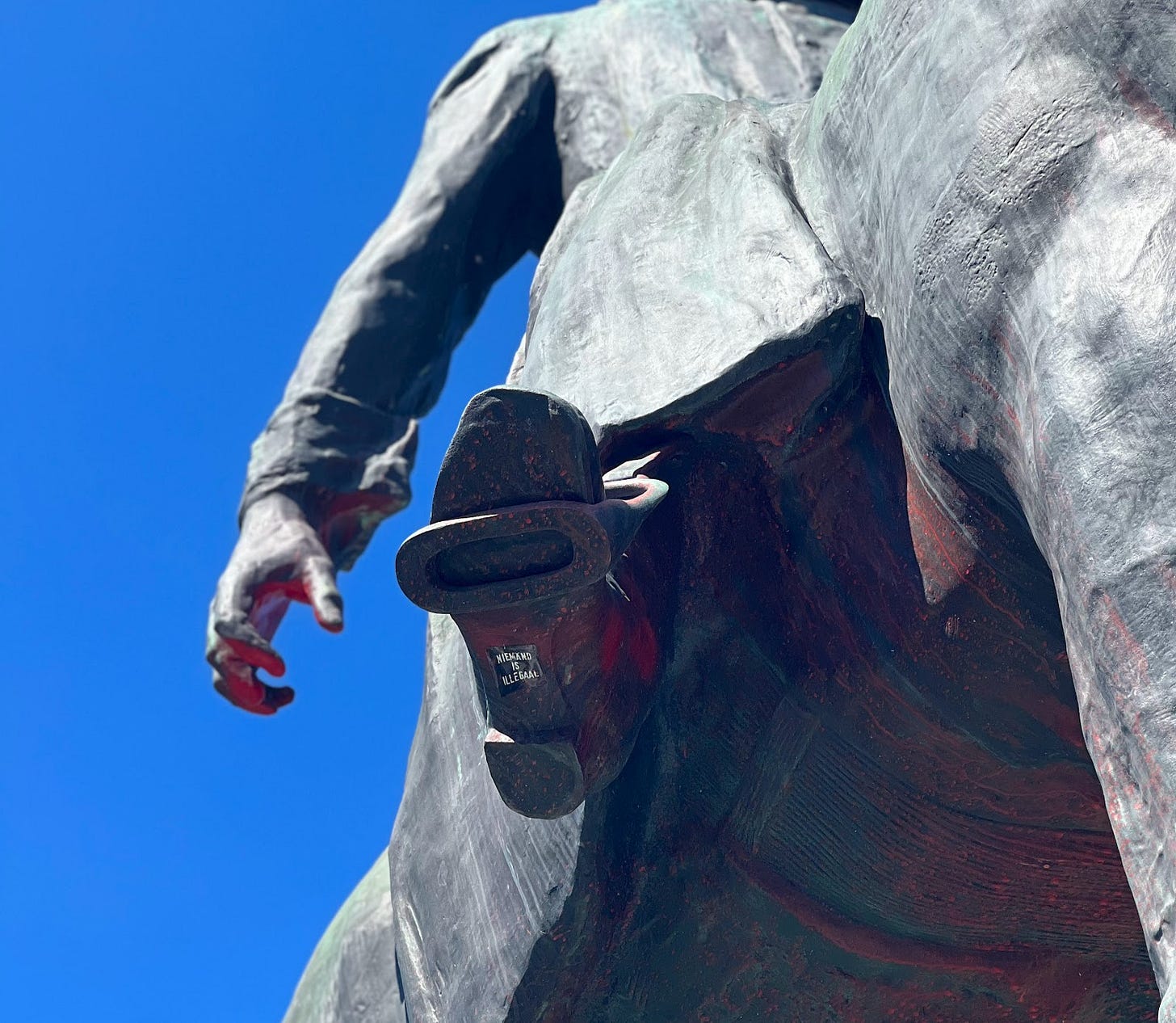
In Antwerp, we climbed to the top of Het Steen castle for views of the city. We had lunch under the shadows of the medieval guild houses, with their Flemish stepped roofline silhouettes. I left my husband and kids at the hotel and ran alongside the river. I wound along the gentrified docks near the center of town and the industrial port north of town, pretending it was 1898 and steamers from Congo were unloading ivory and rubber around me. I explored all ten floors of the MAS museum.
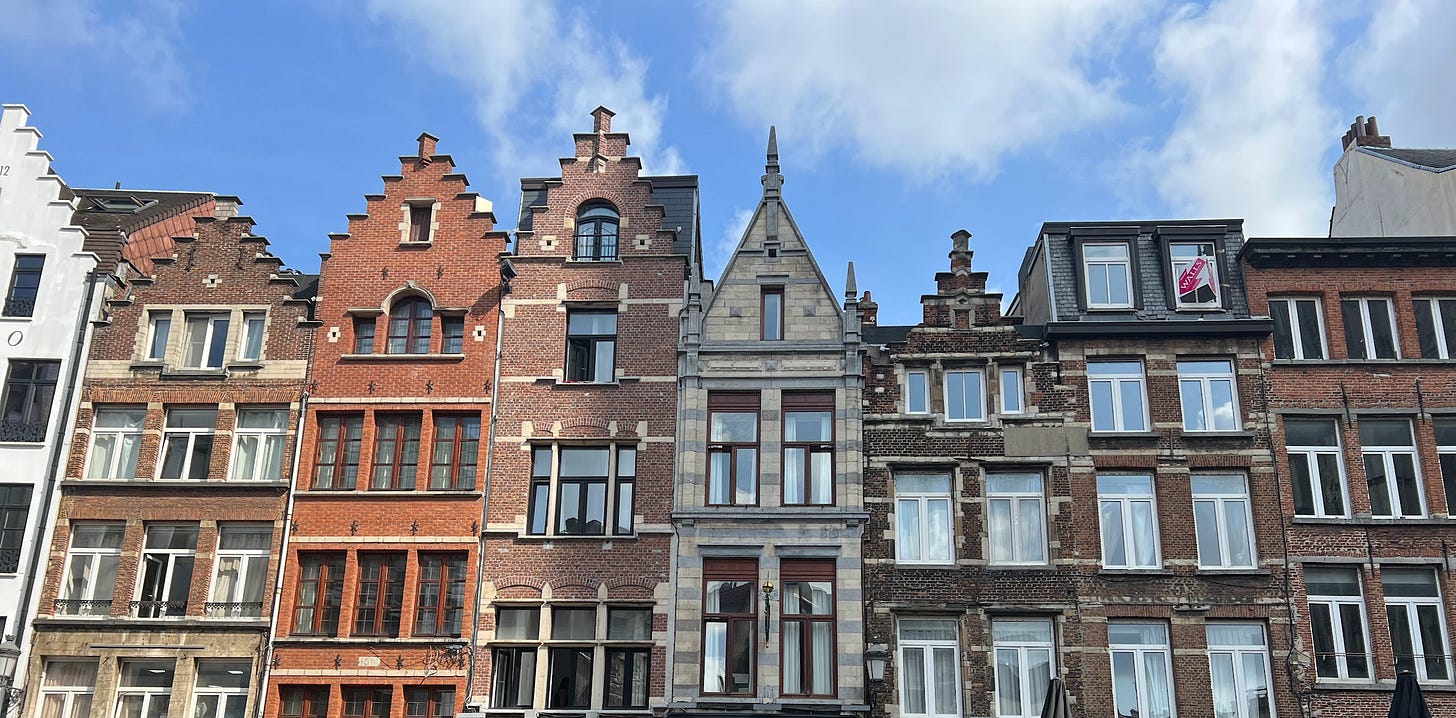
Know what I did not find in Antwerp? Any acknowledgment of Congo.
There was no recognition that the city was the entry point for nearly all the blood-soaked rubber and ivory that poured in after King Leopold II took control of the colony. Everywhere I went there were references to general “wealth” from the late 1800s and the city’s long shipping history, but no discussion of where all this wealth came from.
Okay, there was one display case tucked in a museum that contained some basic information that anyone could find on Wikipedia.
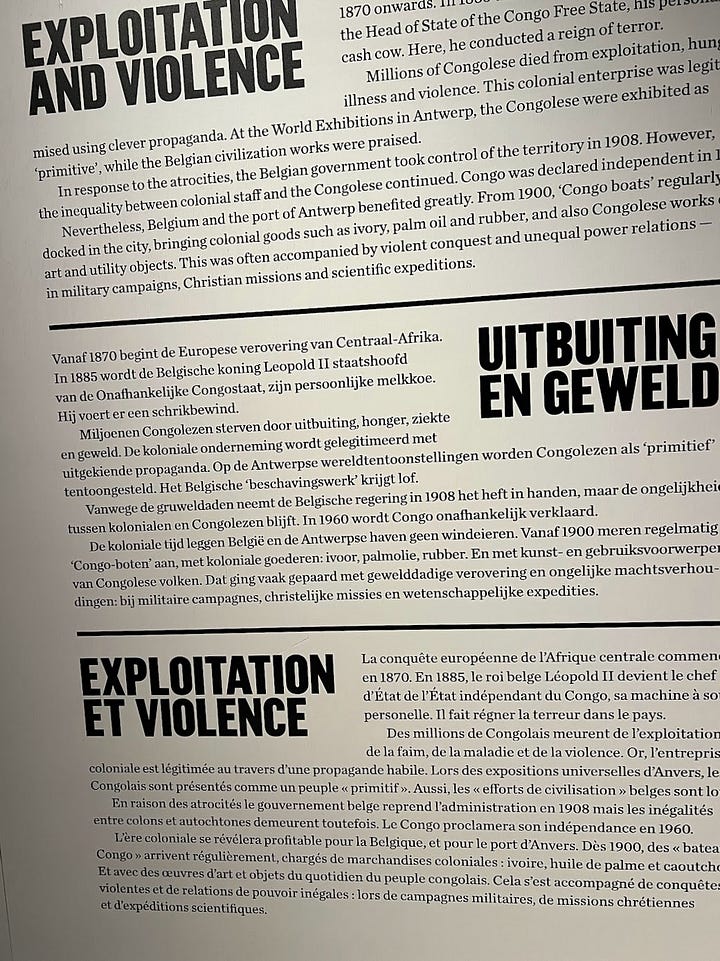
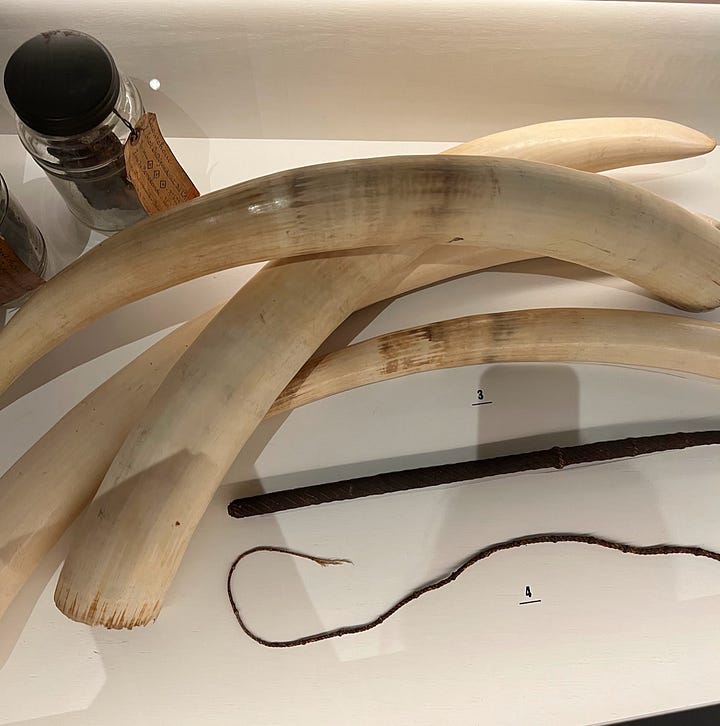
I wanted more, Antwerp.
Four months after my visit, I’m still conflicted about how I feel about my trip. Spending money in Antwerp kinda gives me the ick vibes I’d likely feel if I toured a Southern plantation.
However, it’s not just Antwerp. The Eiffel Tower was financed by money demanded from impoverished Haitians as retribution for the Haitian Revolution. The wealth of Italian churches is a sickening reminder of the hypocrisy of the Catholic Church. Let’s not even talk about the British Museum.
Ugh. History.
A lesson to teach:
I teach my students a little about Edmund Morel as part of our unit on colonialism in Africa. My whole unit plan is here, should you need a month’s worth of lesson plans. The unit concludes with students looking at examples of people who resisted European colonial rule in Africa. Most of my examples are Africans (be on the lookout for some Yaa Asantewaa info next week). Morel is the only straight white guy on my list of people who resisted European colonialism in Africa.
I divide my students into nine groups (with 3 or 4 people in each group) and give each group a person to study. Each group gets a bit of information about their person, and a primary source (a speech, picture, letter, or book from that person). Each student (not each group! Each student!) chooses a quote from their person, makes a poster about that quote, and writes a little speech about their person/the quote.
Then, students present their posters/speeches. Assign each person in each of the nine groups a number: 1, 2, 3, or 4. Have all the 1s present (it’s usually best to reserve a bigger room in your school for this, if available). Divide up the rest of the students to listen to the presentations. There will be nine presentations all happening at the same time, so about 2 or 3 students will listen to each presentation. After the first presentation, the speakers stay put and the listeners rotate on to the next presentation. Then all nine presenters will give their speech again. Then, they’ll rotate, present again, etc., etc. until everyone has heard all the speeches.
Then, all the 2s present, then the 3s and 4s. Presentations usually take 2 or 3 days. Here are the notes that students take while they are listening to presentations.
Side note: I’m on the curriculum purchasing committee at school, and was thrilled that Houghton Mifflin Harcourt’s latest edition of the World History book actually includes Edmund Morel!
Except that his name is Edmund, not Edward. Also, he never lived in (or even visited) Congo. Try again, textbook writers!
Morel, E.D. E.D. Morel’s History of the Congo Reform Movement. Eds. William Roger Louis and Jean Stengers. Oxford; Clarendon Press, 1968: p. 30.
Morel’s quote about “a king for a croniman” is also in E.D. Morel’s History (it’s on page 42). The quote also is heavily featured in Hochschild’s book. The chapter on E.D. Morel (pp. 167 - 181) is titled “A Secret Society of Murderers” and the full quote from Morel is on pages 180 - 181.

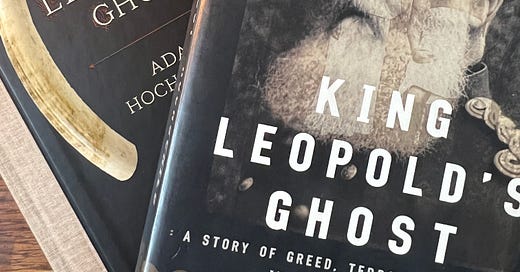


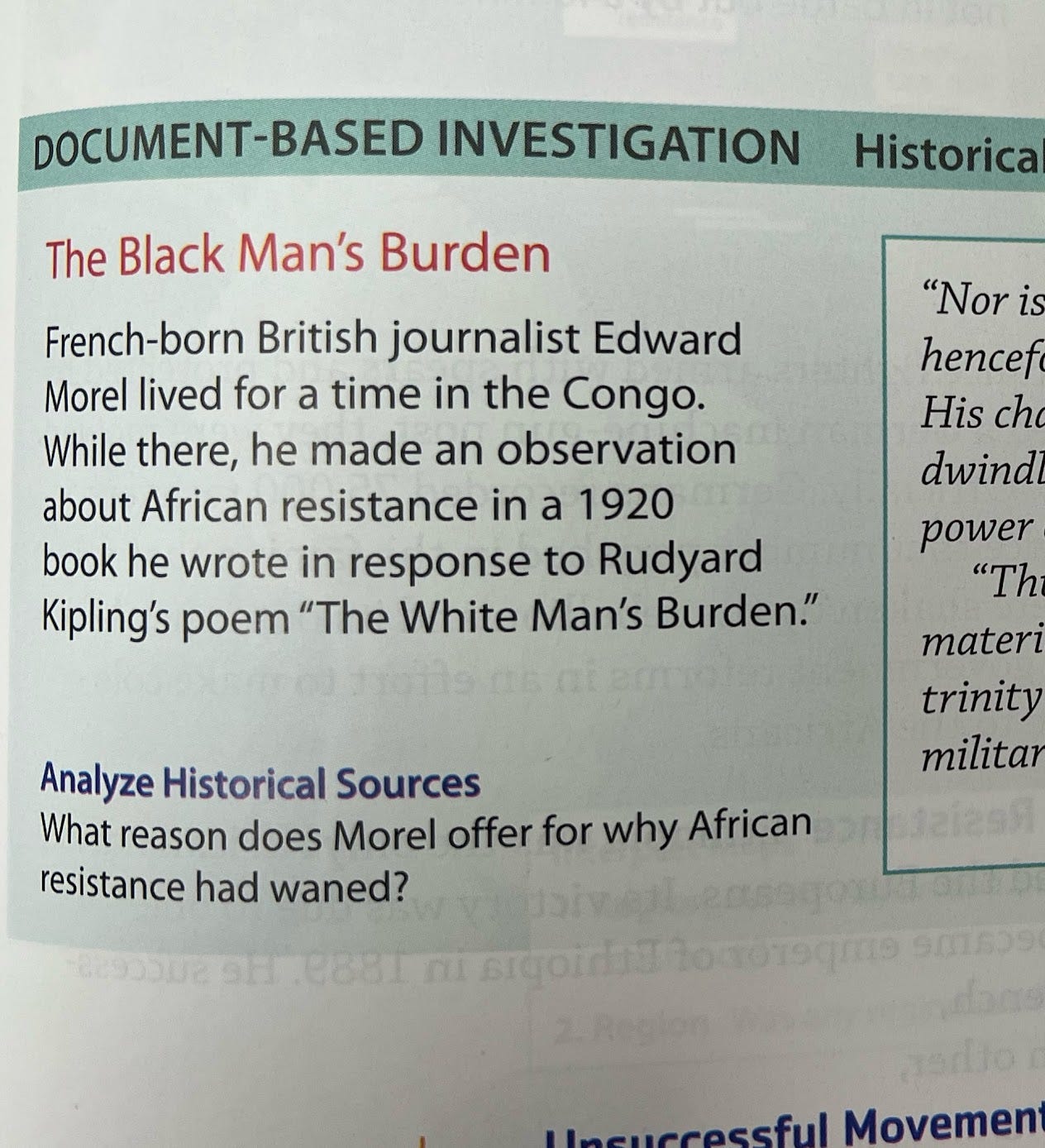
Jenna, you are the best history teacher ever. Thank you for sharing this story. A great reminder of how much good one person can do in the world, through paying attention and speaking out.
Very interesting and factually useful read